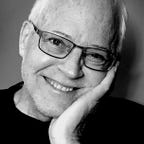Art of the Courthouse Winds Down
A Complicated Trifecta at Week 6
There’s an odd kind of trifecta I encountered with the U.S. v. Thao (et al.) trial in St. Paul as it entered its final stretch. Both definitions for “trifecta — 1, seeing how a race that is bet in the end accords with a predicted “order of finishing,” and 2, a “three-something” — seem to apply. The indictment of the defendants has — at its core — counts, three of them, numbered sequentially:
Count 1 seemed to have come and gone with Derek Chauvin’s plea of guilty in a Federal hearing several months ago.
Count 2 pertains to Mx. Thao and Kueng — and remains.
Count 3 is against all former officers, though again Mx. Chauvin has departed that count. And so count 3 against Mx. Thao, Kueng, and Lane remains for a jury to decide.
It may be best if one does a studied read of the indictment deeper than my point forms above, but that, ultimately (and practicably), is required of only the jury when they go into deliberation, which is this week.
In court, two final scenes — heard and sketched
I’m hard of hearing and hated courtroom “sidebars.” My first experience of it was in late January:
“Sidebar?!,” asked an attorney.
“OK,” replied the judge.
Then the courtroom was blasted with white noise–ouch! The judge and all litigators donned headphones to discuss the matter privately. One litigator “hid” their mouth (with a legal pad), like a coach in a football game. (As if jurors might read lips!) Given it’s about sound, of the many events a court artist might sketch this wasn’t one. (Darn.)
My final trial sketch was as a small gesture, of an on-screen slide presented by the prosecution during their summation of an hour and a half. It was a montage of the four spectators pleading to police to care for George Floyd. I sketched it as it seemed to me to be effective visual summary of a very wordy summation.
Results
Two of the 7 are from back in January, the remaining were sketched this month. (A mix of styles, media, surfaces, and sizes.)
Back in the poolroom: A “Rashomon Effect?”
In my previous column, I mentioned the media pool. During the final days of the trial, I thought of the 1950 Japanese film, Rashomon. In the film, multiple observers of a crime differ in their telling.
There is the obvious parallel of what is known as the “Rashomon effect” to the trial of U.S. v. Thao, given that all three defendants offered witness and described aspects of the same crime, something that was not initially expected by the press and legal analysts.
Also in the film, much was “unseen” by each protagonist. Is this also true of all of us in the media pool, journalists, and sketch artists? What might have we missed?
One correspondent—a journalist and filmmaker — shared an astute observation with me on the day the jury was sent by the judge into deliberation:
“It seems that they have gone quite granular with this case [by] deconstructing an emergency situation with rookies. I don’t think that’s natural … On one hand there is a duty to intervene … yet senior officers have never heard of this of this policy … On the other hand you are told to listen to your superior–?”
My thought as a response (whether you zoom back for a holistic view — or do a deep dive into details) — is this: it was such a sad Venn-diagram of core human values (power, skill, rectitude, and well-being — or its absence) that collided to deliver one tragic death with a dozen stakeholders involved.
The only reason we know of it in such detail is almost by chance, due to the smartphone videography of a quick-thinking young person. One can write about “shades of gray” but, of course, juries will soon have to pretty much decide “yes or no.”
Lastly, “The Public:” inside vs. outside
So, what do Counter Arts readers (you “the public”) know about this trial?
Frankly, after over a month of testimony that I heard and sketched what you read is barely the tip of an iceberg. It could’ve been otherwise: Public access to closed-circuit TV of the trial within the Burger Courthouse was the best kept secret in St. Paul. It was your tax dollars at work. Rarely were there more than two spectators in a space that would’ve accommodated 40.
Outside the Burger Courthouse, one press conference was held as of this column’s date, February 23. Courtney Ross had passionate words: I had seen Mx. Ross in court, she was Mr. Floyd’s partner. More about her — and members of the family of a defendant — in my final column.
My next (and last) column: the jury decision of February 24, then, “the gallery is closed…”
Acknowledgement: Editing assistance courtesy Kathy Heuer. Errors that might remain are mine and mine alone.
J. Kevin Byrne (MA/Minnesota, MFA/Cranbrook, MSc-Cert./Saint Mary’s) is Professor (now Emeritus) at the Minneapolis College of Art and Design (MN/USA). He has published in print and continues to do so online. Feel free to Link-in to him here.
